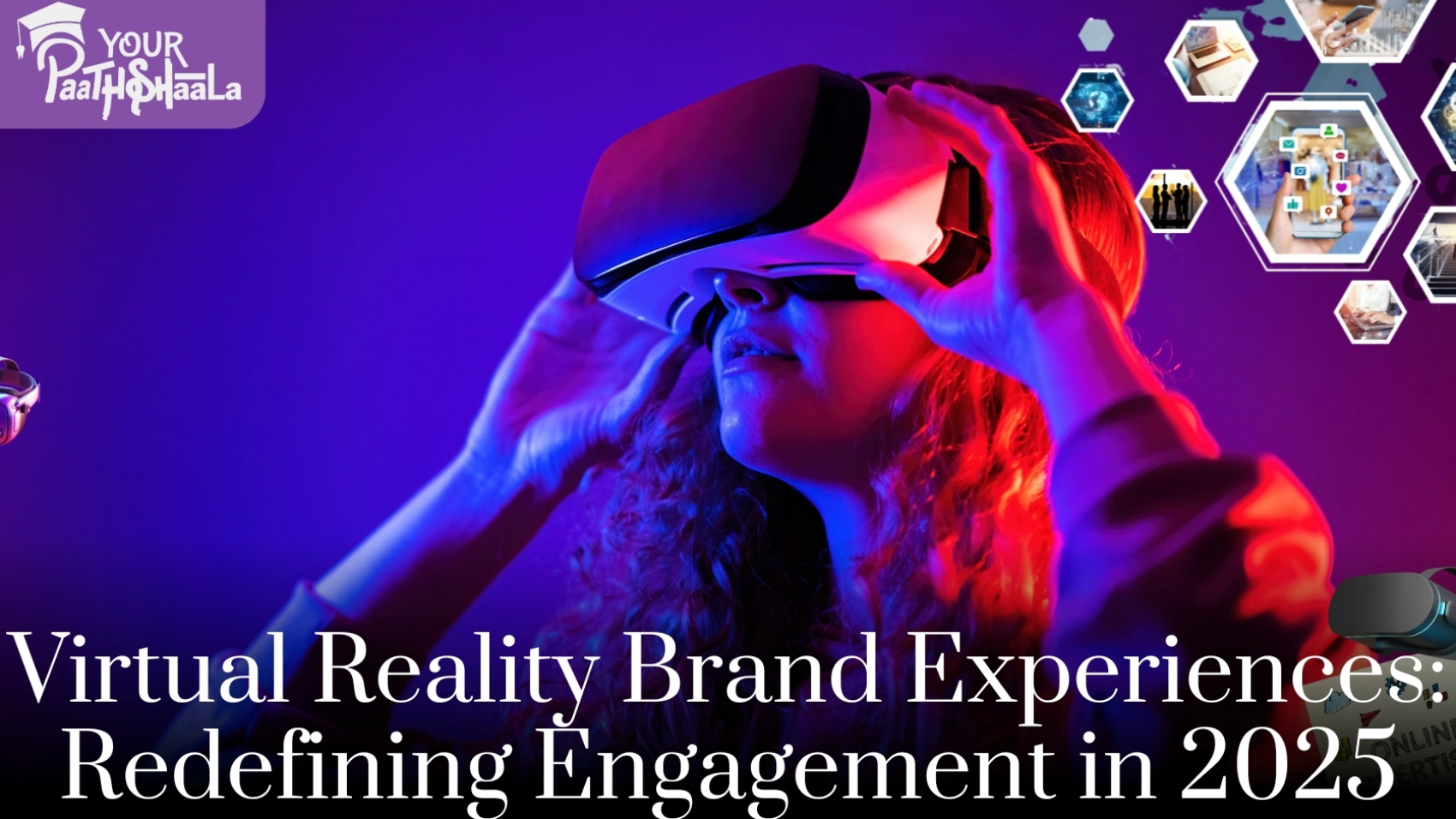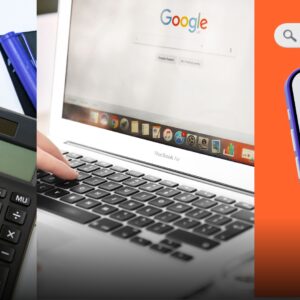Imagine stepping into a virtual store where you can try on clothes, test drive a car, or explore a tropical resort—all without leaving your home. This is the power of virtual reality (VR) brand experiences in 2025. Unlike traditional ads that compete for attention, VR immerses consumers in fully digital worlds, creating unforgettable connections with brands. From gaming headsets to affordable VR glasses, this technology is transforming how businesses engage audiences.
In 2025, VR is no longer just for gamers—it’s a cornerstone of digital marketing. With the global VR market expected to surpass $57 billion by 2027, brands are leveraging VR to stand out in a crowded digital landscape. This blog explores how virtual reality brand experiences are redefining marketing, from their mechanics to real-world applications, challenges, and future trends. Whether you’re a small business owner, a marketing professional, or a curious consumer, here’s your guide to VR’s impact on branding in 2025.
What Are Virtual Reality Brand Experiences?
Virtual reality creates fully immersive digital environments, accessed through headsets like Meta Quest, PlayStation VR2, or emerging lightweight glasses. Unlike augmented reality (AR), which overlays digital elements onto the real world, VR transports users to entirely virtual spaces. For brands, this means crafting experiences where consumers can interact with products, services, or stories in a controlled, engaging setting.
Virtual reality brand experiences range from virtual showrooms to interactive storytelling. They’re accessible via VR headsets, smartphones with VR apps, or even web-based platforms. In 2025, advancements in AI, 5G, and affordable hardware make VR more accessible, with 80% of U.S. households owning a VR-compatible device. These experiences drive engagement, with studies showing VR ads achieve 30% higher emotional impact and 50% better brand recall than traditional formats.
Example: Nike’s VR sneaker launch lets users explore a virtual design studio, customize shoes, and “wear” them in a digital city. The campaign generates buzz, with users spending an average of 5 minutes in the experience—far longer than a typical ad view.
How VR is Transforming Brand Engagement
Virtual reality brand experiences are revolutionizing marketing by offering immersive, interactive, and memorable ways to connect with audiences. Here’s how brands are using VR in 2025:
Virtual Showrooms and Product Trials
VR lets consumers “try before they buy” in immersive environments. Retail, automotive, and real estate brands use virtual showrooms to showcase products:
- Retail: Adidas’ VR store lets users browse clothing racks, try on outfits, and see how items look in a virtual mirror. This reduces purchase hesitation, boosting conversions by 35%.
- Automotive: Audi’s VR test-drive experience places users behind the wheel of a new model, navigating virtual terrains. Dealerships report a 20% increase in inquiries after VR demos.
- Real Estate: Realtors offer VR property tours, letting buyers explore homes globally. Zillow’s VR tours in 2025 include interactive features like rearranging furniture, increasing engagement by 40%.
Stat: VR product trials result in 25% higher purchase intent compared to video ads, per a 2024 industry report.
Immersive Storytelling
VR excels at storytelling, letting brands craft narratives that resonate emotionally. Instead of watching a brand’s story, consumers live it:
- Entertainment: Warner Bros. creates VR experiences for movie launches, like a “Dune” desert adventure where users explore Arrakis. Fans spend 10 minutes on average, sharing clips on social media.
- Nonprofits: Charity: Water’s VR campaign immerses users in a virtual village, showing the impact of clean water donations. This drives a 15% uptick in contributions.
Example: Coca-Cola’s VR holiday campaign places users in a virtual North Pole, interacting with polar bears and Santa. The experience goes viral, with 2 million downloads in a month.
Gamified Brand Interactions
Gamification in VR turns brand engagement into fun, interactive challenges. Brands create virtual games or quests to deepen connections:
- Food and Beverage: Red Bull’s VR wingsuit racing game lets users compete in a branded virtual world, increasing brand affinity among 18–34-year-olds.
- Fashion: Gucci’s VR treasure hunt invites users to find virtual accessories in a digital city, unlocking real-world discounts. The campaign sees 100,000 participants in its first week.
Event and Community Building
VR enables brands to host virtual events, from concerts to product launches, accessible globally:
- Concerts: Travis Scott’s 2020 Fortnite concert, experienced in VR, drew 12 million attendees. In 2025, brands like Spotify host VR festivals, with interactive booths and meet-and-greets.
- Conferences: Adobe’s VR Summit lets marketers attend workshops in a virtual convention center, cutting travel costs and boosting attendance by 30%.
Stat: VR events achieve 60% higher engagement rates than live-streamed alternatives, per Meta’s 2025 marketing insights.
Social and Metaverse Integration
The metaverse—a network of virtual worlds—amplifies VR brand experiences. Platforms like Roblox, Decentraland, and Meta’s Horizon Worlds are hubs for branded spaces:
- Virtual Stores: Walmart’s metaverse store lets users shop in VR, with avatars trying products before purchase. Sales from VR stores rise 20% year-over-year.
- Social Spaces: L’Oréal hosts VR beauty workshops in Decentraland, where avatars learn makeup techniques, driving brand loyalty among Gen Z.
Example: Balenciaga’s VR fashion show in Roblox lets users walk the runway, generating 1 million visits and thousands of social shares.
Technologies Powering VR Brand Experiences
Several technologies make VR brand experiences possible in 2025:
- AI and Machine Learning: AI personalizes VR worlds, adjusting environments based on user preferences. For example, a VR store might showcase products based on past purchases.
- 5G Connectivity: Low-latency 5G ensures smooth VR experiences, even in multiplayer settings like virtual events.
- Advanced Hardware: Lightweight headsets like Meta Quest 3 and Apple Vision Pro offer high-resolution visuals, while budget-friendly options like Google Cardboard expand access.
- Haptic Feedback: Devices like haptic gloves simulate touch, letting users “feel” products in VR, enhancing realism.
Stat: The VR hardware market grows 15% annually, with 25 million headsets sold globally in 2024, per IDC.
Challenges and Solutions
While powerful, virtual reality brand experiences face hurdles:
- Accessibility: VR headsets remain costly for some, and not all consumers are tech-savvy. Solution: Web-based VR and smartphone apps lower barriers, and brands offer in-store VR stations.
- Development Costs: Creating VR experiences is resource-intensive. Solution: Platforms like Unity and Unreal Engine streamline development, and templated VR tools reduce costs.
- Motion Sickness: Some users experience discomfort in VR. Solution: Optimized frame rates and user-friendly interfaces minimize issues.
- Privacy Concerns: VR collects data like eye tracking or location. Solution: Transparent data policies and opt-in features build trust.
Future Trends in VR Brand Experiences
Looking beyond 2025, VR brand experiences will evolve:
- Metaverse Dominance: Brands will invest heavily in metaverse platforms, creating persistent virtual worlds for shopping, socializing, and events.
- Wearable Integration: VR glasses, like Meta’s Orion, will replace bulky headsets, making experiences more portable.
- AI-Driven Worlds: Generative AI will create dynamic VR environments tailored to each user, like a virtual store that adapts to your style.
- Cross-Platform Synergy: VR will integrate with AR, social media, and voice assistants for seamless omnichannel campaigns.
- Sustainability Focus: VR reduces physical waste (e.g., no need for printed brochures), aligning with eco-conscious consumer values.
Projection: The global VR market will hit $100 billion by 2028, with brand experiences driving significant growth.
Getting Started with VR Brand Experiences
Ready to launch a virtual reality brand experience? Here’s how to begin:
- Start Small: Create a VR demo on a platform like Roblox or Meta’s Horizon Worlds to test engagement.
- Collaborate with Experts: Partner with VR agencies or use tools like Unity for development.
- Focus on Value: Offer practical experiences, like virtual try-ons or tours, to solve customer pain points.
- Measure Success: Track metrics like time spent, interactions, and conversions using VR analytics platforms.
- Encourage Sharing: Design shareable VR moments, like virtual selfies, to boost organic reach.
Example: A small coffee brand launches a VR café experience on Roblox, letting users “visit” a virtual coffee farm and earn coupons. The campaign drives 10,000 visits and a 15% sales lift.
Conclusion
In 2025, virtual reality brand experiences are redefining digital marketing by immersing consumers in unforgettable worlds. From virtual showrooms to metaverse events, VR offers engagement, recall, and conversions far beyond traditional ads. With a projected $57 billion market by 2027, brands leveraging VR—from Nike to nonprofits—are seeing massive returns. Challenges like cost and accessibility exist, but solutions like web-based VR and affordable hardware are paving the way. The future, with AI-driven worlds and wearable tech, promises even more innovation.
Ready to craft a virtual reality brand experience? Start with a small campaign, measure its impact, and dream big. What’s your vision for VR in 2025? Share your ideas below and let’s shape the future of branding! In Bestdigitalmarketingcourseinraipur you will learn all about it and more.







